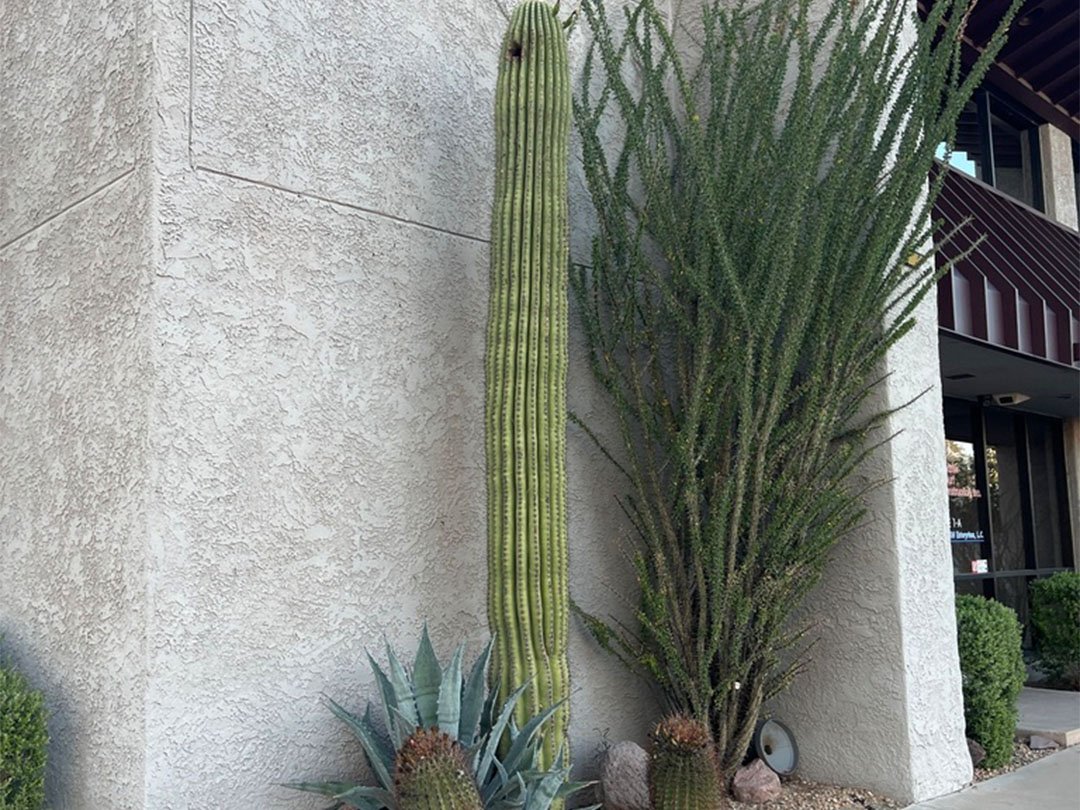Desert Botanical Garden’s Saguaro Census recorded 3,406 saguaro observations across metro Phoenix in May, bringing the total to 25,739 since the project began two years ago. Before the census, only 4,096 observations were logged in iNaturalist, a free app that tracks biodiversity.
This effort has greatly expanded the Garden’s knowledge of urban saguaros through vital data to help scientists understand the health and demographics of saguaros in urban areas, particularly in light of recent heatwaves and record-breaking temperatures. In May, 99 volunteers and Valley residents participated in the census.
“Every saguaro observation is important, and those submitted through the volunteer project provide even more valuable data,” said Garden research scientist and Saguaro Census creator Dr. Tania Hernandez. “When observers join the volunteer project, they’re prompted to provide additional information such as the plant’s size, number of arms, and health condition, which is critical for our research.”
Of the total observations recorded in May, about 46% of them included detailed information, significantly enriching the data collected.
The census data is revealing key patterns. Most of them are 1medium-sized (63% are 3-16 feet tall), while 2large saguaros (over 16 feet) account for 30%.
Worryingly, only 7% are 3under 3 feet, suggesting a shortage of young saguaros to replace aging giants, which are particularly vulnerable to extreme heat.
“We use saguaro size as a proxy to age” Hernandez said. “What these data is telling us is that we have very few babies in our urban population. Since heat waves are affecting more significantly the old and larger individuals, when they die, there’s not going to be a young cohort to replace them, and we will have to bring saguaros from somewhere else, which is expensive and most of the times transplants are unsuccessful.”
To get more information about deceased saguaros, the Garden started the Saguaro Dead Report last summer, where the community can fill a short form and report deceased saguaros.
Participants reported 346 saguaros that died or had to be removed.
“The majority of saguaros in the dead report are described as large in size; however, the census showed to us that the majority of saguaros in the metro area are of medium size and are in good health. It seems that it is especially the older individuals who are not able to cope with extreme summer heat, and they are dying,” Hernandez said.
The death of an old saguaro is catastrophic. These towering plants take decades, even centuries, to grow, and once lost, they leave a gap in the landscape that younger saguaros cannot immediately fill. With hotter and drier summers becoming more frequent, Garden scientists have noted a worrying uptick in urban saguaro deaths. In the summer of 2023, Phoenix experienced 31 consecutive days with temperatures of 110°F or higher, from June 30 to July 30.
Another significant finding is that 72% of urban saguaros are in 4residential areas, making homeowners and local communities the primary stewards of this iconic species.

Recognizing this, Garden scientists, students and volunteers finished this summer the Saguaro Seed Bank, a complete collection of saguaro seeds from across the species’ range.
“We traveled far and worked hard on the summer heat to collect and clean the saguaro seeds, so we can have a reservoir of the genetic diversity of the species guarded in the Garden’s seed bank,” Hernandez said.
The plan is to grow seedlings that are better adapted to Phoenix’s harsh conditions. Volunteers will raise these young saguaros until they’re ready for adoption by the community, making it a collective effort to preserve saguaros in urban spaces.
“It will be a true collective effort toward the preservation of a species in an urban space,” Hernandez said.
Despite wetter conditions this year, extreme heat continues to take a toll on Phoenix’s saguaro population. With ongoing community support and scientific research, the Garden is working to ensure their survival in our rapidly changing climate.
1 997 out of 1,577 observations that were included in the ‘size’ field, NOT the total number of observations.
2458 out of 1,577 observations.
3122 out of 1,577 observations.
4 1,142 out of 1,578 observations with this field.






